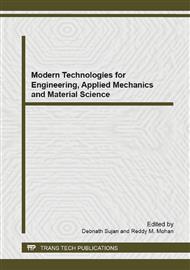p.172
p.179
p.184
p.189
p.194
p.198
p.203
p.208
p.214
New Algorithm to Reduce File Size and Bandwidth of Hashed Digital Signature for Image Steganography Using LSB
Abstract:
In computer cryptography, digital signature is one of the best cryptography systems. Public-private keys are used to pass sensitive information however it can also be used to provide authentication on the particulars of a sender. Proposed algorithm is a new design and simple implementation mechanism for producing a digital signature. Some applications such as multi agent systems transferred data with small size and capacity. The new scheme minimizes the size of original file and gives us a dynamic and smaller hashed message output. In this algorithm load the original files then hashed the message and encode it with the private key of sender. Finally modify the established code into a unique digital signature at Base 16. We concentrate on designing and implementation of functions of algorithm.
Info:
Periodical:
Pages:
194-197
Citation:
Online since:
June 2014
Keywords:
Price:
Сopyright:
© 2014 Trans Tech Publications Ltd. All Rights Reserved
Share:
Citation:


